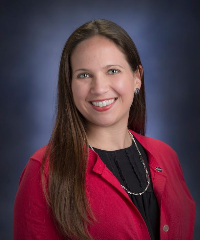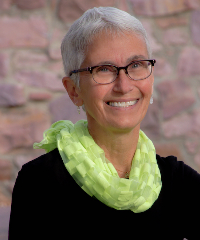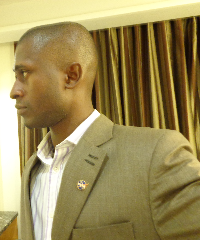GISN & STEM Professional's Blog - GLOBE International STEM Network
GISN & STEM Professional's Blog
The GLOBE International STEM Network (GISN) and STEM Professional's Blog is an online collaborative effort where scientists associated with GLOBE post their thoughts, comments, and philosophies about a variety of science topics.
GLOBE strongly encourages positive and productive discussions to further advance the scientific understanding of all involved with The GLOBE Program.
Filter By:
Blogs List
2022 Celebration
NASA GLOBE CLOUD GAZE has tagged over 735,000 photographs of sky and clouds all because of you! The photographs are part of cloud reports sent in from over 120 different countries and regions around the world.
NASA GLOBE CLOUD GAZE is closing with a very successful story. The project will stop collecting data on 1 December 2022. On 16 December 2022, NASA GLOBE CLOUD GAZE will no longer be a NASA sponsored project. The website will remain open. The datasets will be available for researchers and participants to use. The Cloud interactives ( Cover and ...
Read More »
Posted in:
Investigation Areas:
ATMOSPHERE
News Topics:
NEWS BRIEFS
The NASA GLOBE Clouds Quarterly Update is available for September/October/November 2022!
Match to a Million Satellite Matches Celebration
Thanks to you, The GLOBE Program has reached one million satellite observations matched to your cloud reports! Share in the celebration and thank you videos made just for you.
GLOBE Clouds New Satellite Matching: NOAA-20
The NASA GLOBE Clouds team will soon be adding NOAA-20 to our satellite matching capabilities. Learn more about NOAA-20 and updates to the GLOBE Clouds satellite matching schedule.
Meet an Expert: Naudia Graham ...
Posted in:
Curriculum:
SCIENCE AND MATH
GLOBE International STEM Network (GISN):
GLOBE INTERNATIONAL STEM NETWORK (GISN)
GLOBE Science Topics:
BACKYARD SCIENCE
CLIMATE
CLIMATE CHANGE
GLOBE PROTOCOLS
EARTH AS A SYSTEM
Investigation Areas:
ATMOSPHERE
CLOUDS
Have you ever wondered why NASA has chosen to follow water ? NASA’s James Webb Space Telescope has captured the distinct signature of water outside our solar system. NASA's Artemis program is examining the presence of water on the Moon in advance of sending and establishing a sustainable human presence there. The answer is simple - water is key to life as we know it, including on planet Earth. Only 2.5% of the water on Earth is fresh, and only a tiny fraction of that is available for use. NASA and other space agencies’ remote sensing satellites provide vital information to ...
Posted in:
Diversity, Equity, and Inclusion:
DIVERSITY, EQUITY, AND INCLUSION
GLOBE Science Topics:
EARTH SYSTEM SCIENCE
Investigation Areas:
HYDROSPHERE
EARTH AS A SYSTEM
What motivated you to volunteer as a NASA citizen scientist? How did you learn about NASA citizen science?
Well ,I learned about NASA citizen science when I participated in the 2020 (STEM). Due to my experiences with mosquitoes and mosquito-borne disease as a Sri Lankan, I decided to join the Mosquito Mappers team, where part of the was collecting and analyzing GLOBE Mosquito Habitat Mapper and GLOBE Observer Clouds citizen science data. I saw opportunities to utilize my interest in programming to automate certain tasks that made the data we were using more accessible and easier to ...
Posted in:
Investigation Areas:
BIOSPHERE
MOSQUITOES
The Summer 2022 NASA SEES Internship program was a memorable one for the GLOBE Mission EARTH (GME) Team! The 6-week period of hard work, commitment, and dedication by all members led to creative and outstanding research projects from both the Urban Heat Island Effect (UHIE) and the Air Quality Initiative (AQI) Teams. The wide geographical spread of the NASA SEES students allows them to take observations using different GLOBE protocols across the United States.
The AQI Team led by GLOBE Mission EARTH Research Assistant Sara Mierzwiak and GME Teacher Janene Smith mentored a group of 7 ...
Posted in:
Curriculum:
EDUCATION RESEARCH
SCIENCE AND MATH
TECHNOLOGY
STEM
Diversity, Equity, and Inclusion:
DIVERSITY, EQUITY, AND INCLUSION
GLOBE International STEM Network (GISN):
GLOBE INTERNATIONAL STEM NETWORK (GISN)
Student Research Reports:
MISSION EARTH REPORT
GLOBE completed another great month of the Urban Heat Island (UHI) Intensive Observation Period (IOP) in March 2022. 107 schools participated and took a total of 1699 observations throughout the month. It is great to see more and more schools becoming active in this very important project. UHI is becoming more and more important around the world. Saudia Arabia, Croatia, Greece and Taiwan had many schools take observations during March. I am so grateful for the participation of all of the students and teachers and the great work they have done. I would really like to encourage all of the ...
Posted in:
My involvement in the Stem Enhancement in Earth Science (SEES) program started sometime around early spring 2021. The involvement was preceded by a strong recommendation from Dr. Kevin Czajkowski, PI, GLOBE Mission Earth, The University of Toledo.
Indeed, to me as a member of the GLOBE International STEM Network (GISN), my participation in SEES became an opportunity to invoke the GISN mandate which includes to mentor and inspiring ...
Posted in:
Curriculum:
ASSESSMENT AND EVALUATION
EDUCATION RESEARCH
SCIENCE AND MATH
TECHNOLOGY
STEM
Diversity, Equity, and Inclusion:
DIVERSITY, EQUITY, AND INCLUSION
Field Campaigns:
WATERSHEDS
SMAP
SURFACE TEMPERATURE
GPM
GLOBE Science Topics:
EARTH AS A SYSTEM
Investigation Areas:
ATMOSPHERE
HYDROSPHERE
PEDOSPHERE (SOIL)
BIOSPHERE
Learning Activities:
EARTH AS A SYSTEM
Primary Audience:
PARTNERS
SCIENTISTS
STUDENTS
The Urban Heat Island Effect Intensive Observation Period (IOP) has started. The weather in the Northern Hemisphere has started to get warmer as meteorological spring started March 1. There was an amazing weather situation where I live this past Saturday. You can see in the images on the left that I drove about 20 miles (32 km) from my house in Michigan to the Oak Openings Park in Ohio. There is a warm front stalled across the area.
It was near 40 F (6 C) near my house but in the upper 60s (20 C) at the park. You can see in the right image that there was a warm front between my house ...
Posted in:
I thought October 5, 2021, would be a normal day. I sat in a diner with my family after school, scrolling through my email and sipping a mint chocolate chip milkshake. It had been two months since my NASA STEM Enhancement in Earth Science (SEES) internship ended– or so I thought.
Suddenly, I received an intriguing email. The subject line read, “AGU Fall Meeting 2021 Abstract Status Notification.” I had forgotten that my Mosquito Mapping team submitted an abstract in the first place. Taking a break from my milkshake, I curiously opened the email:
“On behalf of the AGU Fall Meeting ...
Posted in:
In the Toledo area, Dr. C and schools in the area focused on studying artificial turf versus grass soccer and football fields. Artificial turf was much warmer than natural grass. This is combining the GLOBE Urban Heat Island Field Study with research by Vasco Mantas from the University of Coimbra in Portugal and George Xian from the USGS Eros Data Center and the AREN Project with Andy Henry and Geoff Bland.
University of Toledo students using the AREN TerraROVER on the UT football field.
You can see that the artificial turf of the football field (called the Glass Bowl) and the ...
Posted in:
Field Campaigns:
SURFACE TEMPERATURE
Investigation Areas:
SURFACE TEMPERATURE
Student Research Reports:
U.S. STUDENT RESEARCH SYMPOSIA (SRS)
MISSION EARTH REPORT
During the SEES internship, I got the opportunity to do data collection fieldwork. This required me to go around my neighborhood and take pictures of specific points that had been calculated using a Python notebook. Some of these points were in parts of my neighborhood that I’d never been to, despite being in my fourteenth year of living there. I even saw a pack of wild javelinas in a particularly remote spot! The task definitely took longer than I expected, but it felt good to know that I had contributed data that would actually help NASA scientists.
I also got to brainstorm my ...
Posted in:
Investigation Areas:
EARTH AS A SYSTEM
MOSQUITOES
Primary Audience:
STUDENTS
TEACHERS
Student Research Reports:
INTERNATIONAL VIRTUAL SCIENCE SYMPOSIUM REPORT
MISSION MOSQUITO REPORT
Did you know that clouds can both warm and cool our planet? Keeping an eye on clouds helps NASA study our climate. You can notice some of these changes by just looking at the clouds.
Here are some examples you might have already noticed:
Do all clouds cast shadows? Low thick clouds tend to cast the most shadows. The shadows show you how the cloud is blocking the light from the sun from reaching the ground. This is similar to you placing your hand in front of your eyes when it is too sunny. Your hand is blocking the light from reaching your eyes. This is the same as the ...
Posted in:
Curriculum:
SCIENCE AND MATH
STEM
GLOBE Science Topics:
BACKYARD SCIENCE
CLIMATE
CLIMATE CHANGE
GENERAL SCIENCE
GLOBE PROTOCOLS
EARTH AS A SYSTEM
SCIENTIST SKILLS
Investigation Areas:
ATMOSPHERE
Primary Audience:
ALUMNI
COUNTRY COORDINATORS
PARTNERS
SCIENTISTS
STUDENTS
TEACHERS
TRAINERS
—
20 Items per Page










